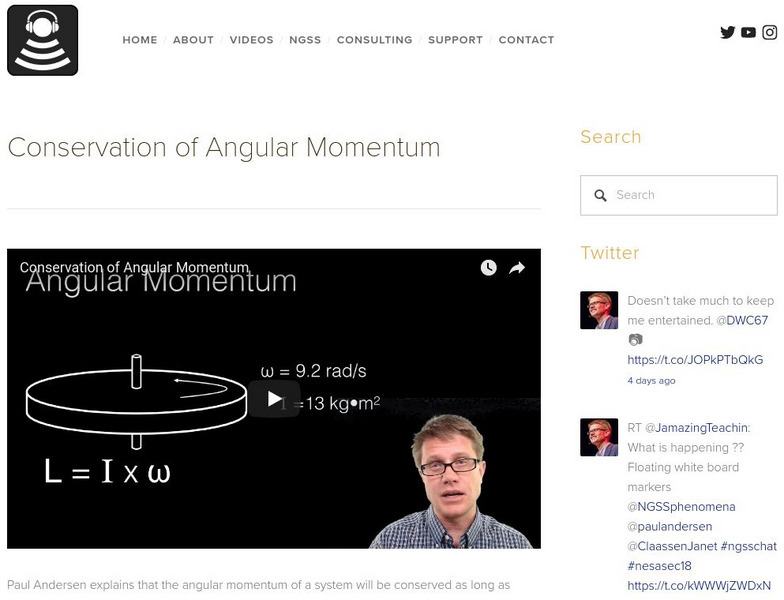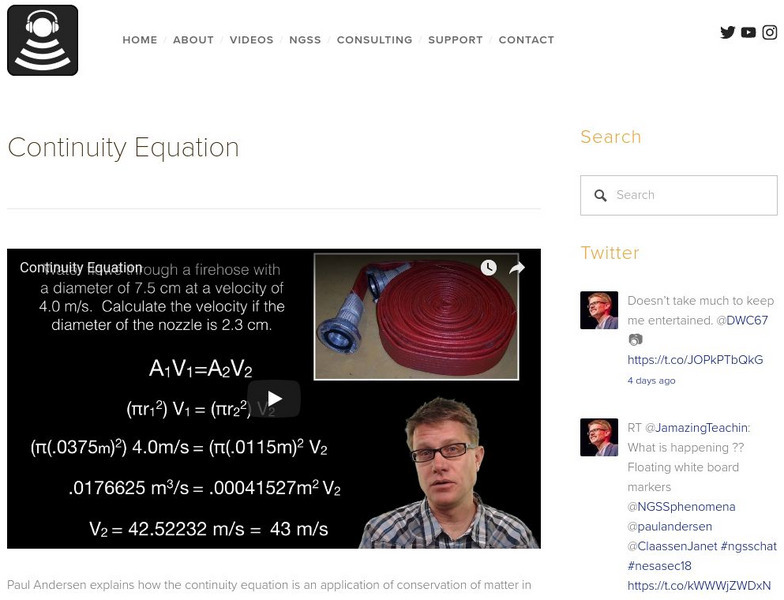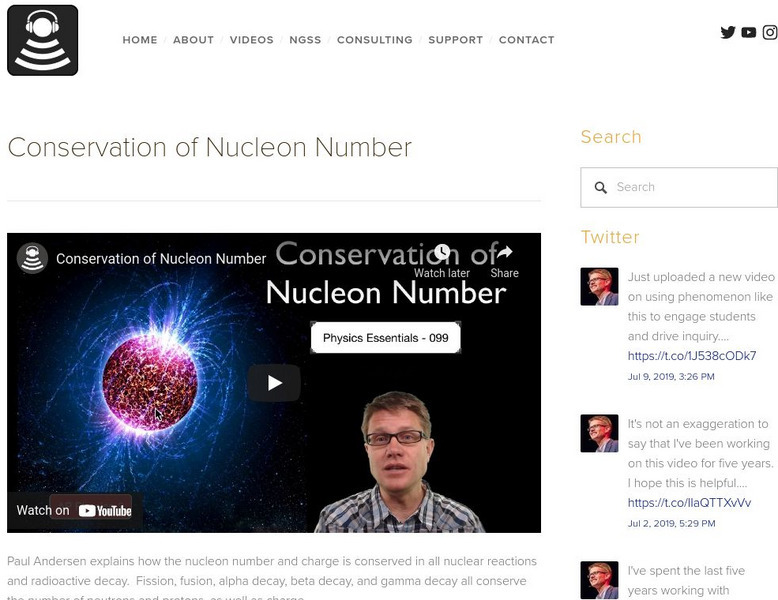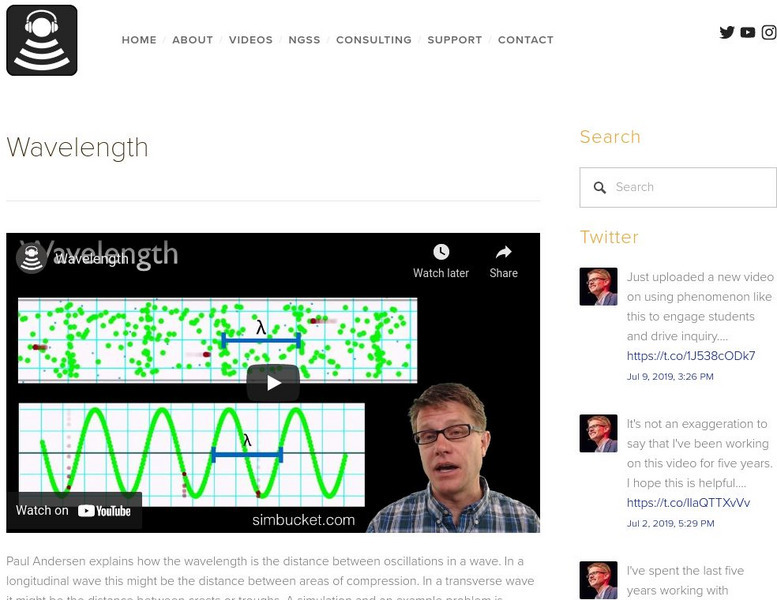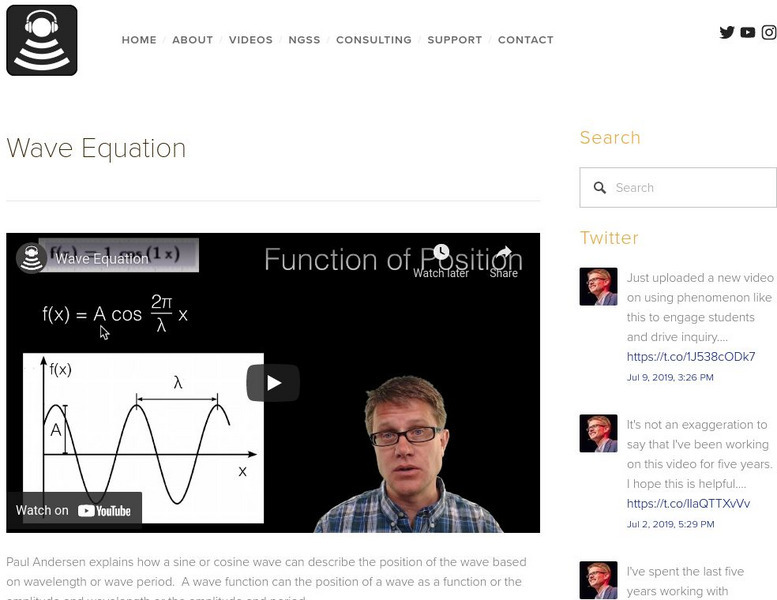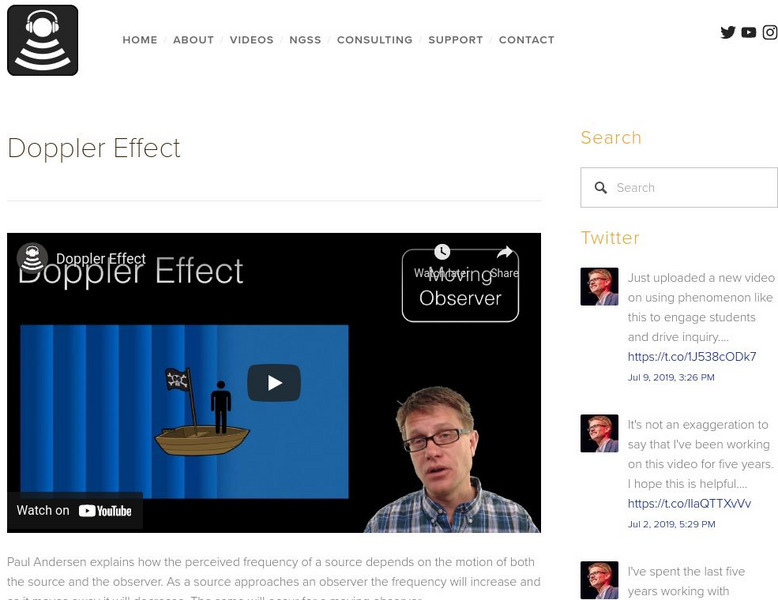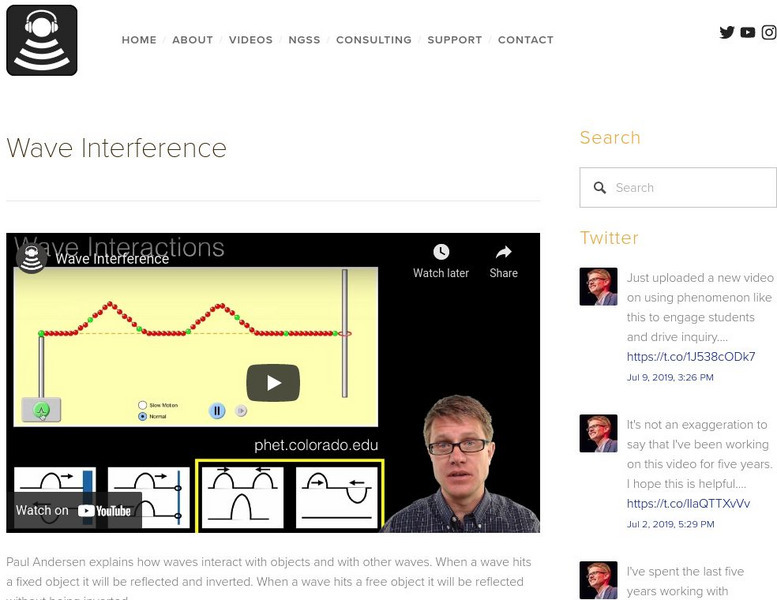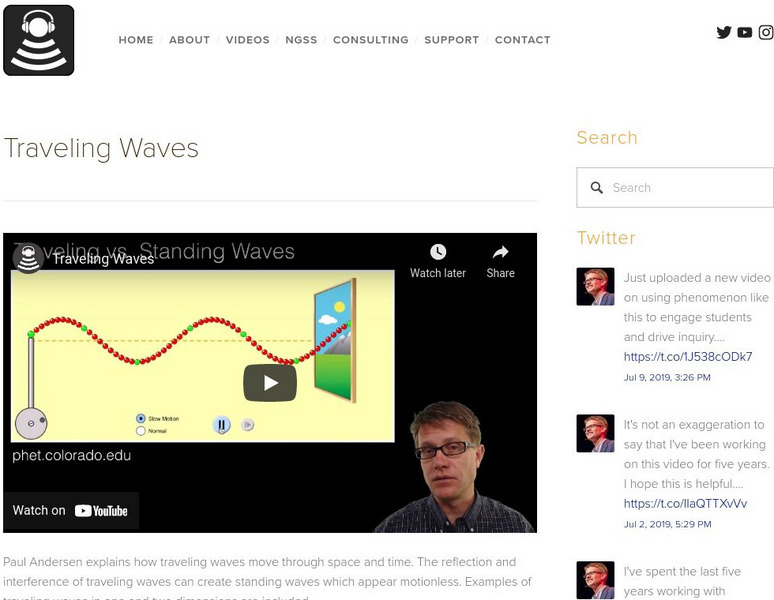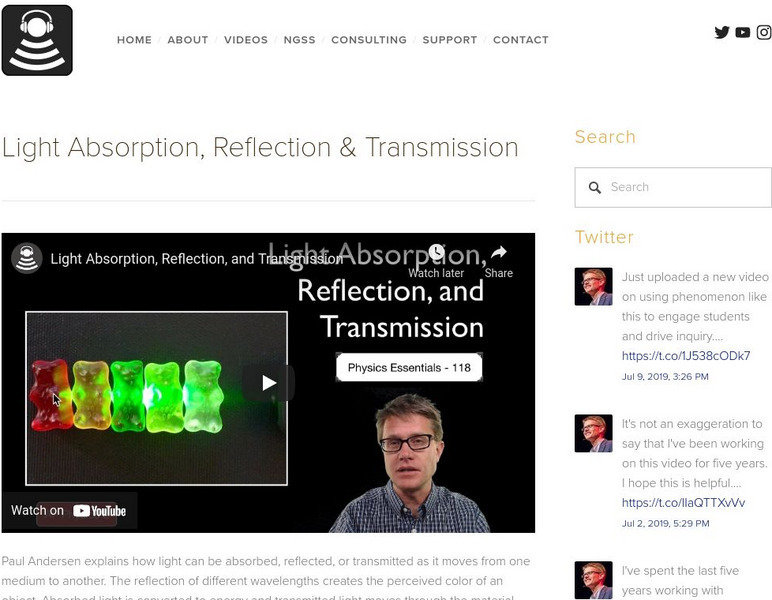Bozeman Science
Bozeman Science: Conservation of Linear Momentum
In the following video Paul Andersen explains how linear momentum is conserved in all collisions. In completely elastic collisions the kinetic energy of the objects is also maintained. Several examples and demonstrations are included....
Bozeman Science
Bozeman Science: Center of Mass
In the following video Paul Andersen explains how the center of mass of an object represents the average position of matter in an object. The center of mass of a system is a combination of all the objects within the system. As long as no...
Bozeman Science
Bozeman Science: Conservation of Angular Momentum
In the following video Paul Andersen explains that the angular momentum of a system will be conserved as long as there is no net external torque. Both point objects and extended objects are covered along with several examples. [5:38]
Bozeman Science
Bozeman Science: Rotational Inertia
In the following video Paul Andersen explains how the angular momentum of an object if a product of the rotational inertia and the angular velocity. The rotational inertia depends on the mass, radius and shape of the rotating objects. A...
Bozeman Science
Bozeman Science: Continuity Equation
Paul Andersen explains how the continuity equation is an application of conservation of matter in a fluid. The continuity equation may apply to either mass or volumetric flow. Example problem and examples are included. [4:05]
Bozeman Science
Bozeman Science: Conservation of Nucleon Number
In the following video Paul Andersen explains how the nucleon number and charge is conserved in all nuclear reactions and radioactive decay. Fission, fusion, alpha decay, beta decay, and gamma decay all conserve the number of neutrons...
Bozeman Science
Bozeman Science: Transverse and Longitudinal Waves
In the following video Paul Andersen compares and contrasts transverse and longitudinal waves. Waves carry energy through oscillations. In transverse waves the oscillations are perpendicular to the direction of the wave and in...
Bozeman Science
Bozeman Science: Mechanical and Electromagnetic Waves
In the following video Paul Andersen compares and contrasts mechanical and electromagnetic waves. Both types of waves transfer energy through oscillations but mechanical waves requires a medium. Several examples of each type of wave are...
Bozeman Science
Bozeman Science: Wave Amplitude
In the following video Paul Andersen explains how the amplitude of a wave is a measure of the energy of the wave. He gives several examples of wave amplitude and shows you how to calculate the wave of a transverse and longitudinal wave....
Bozeman Science
Bozeman Science: Wave Energy
Paul Andersen explains how the energy of a wave if directly related to the amplitude of a wave. The wave energy of a sound wave is the volume of the wave. [3:39]
Bozeman Science
Bozeman Science: Wave Period and Frequency
In the following video Paul Andersen explains how the period is the time between wave and the frequency is the number of waves per second. Period is measured in seconds and frequency is measured in Hertz. Wave period and wave frequency...
Bozeman Science
Bozeman Science: Wavelength
In the following video Paul Andersen explains how the wavelength is the distance between oscillations in a wave. In a longitudinal wave this might be the distance between areas of compression. In a transverse wave it might be the...
Bozeman Science
Bozeman Science: Wave Equation
In the following video Paul Andersen explains how a sine or cosine wave can describe the position of the wave based on wavelength or wave period. A wave function can the position of a wave as a function or the amplitude and wavelength or...
Bozeman Science
Bozeman Science: Doppler Effect
In the following video Paul Andersen explains how the perceived frequency of a source depends on the motion of both the source and the observer. As a source approaches an observer the frequency will increase and as it moves away it will...
Bozeman Science
Bozeman Science: Physics: Wave Interference
Paul Andersen explains how waves interact with objects and other waves. When a wave hits a fixed object, it will be reflected and inverted. When a wave hits a free object, it will be reflected without being inverted. [6:24]
Bozeman Science
Bozeman Science: Physics: Wave Diffraction
In the following video, Paul Andersen explains how waves will diffract (or bend) around an obstacle or while traveling through an opening. Diffraction will be maximized when the size of the opening or obstacle matches the wavelength. [4:20]
Bozeman Science
Bozeman Science: Physics: Interference Patterns
In this video, Paul Andersen explains how constructive and destructive interference can create interference patterns. Interference patterns can be created by all types of waves, including water, sound, and light. A classic experiment...
Bozeman Science
Bozeman Science: Physics: Diffraction Effects
Paul Andersen explains how diffraction can be affected by the size of the wavelength. When waves pass through an opening or move around an obstacle, a shadow region is created. The size of the shadow zone will decrease as the wavelength...
Bozeman Science
Bozeman Science: Wave Superposition
Paul Andersen explains how waves interact when moving through one another. Unlike particles waves can interfere both constructively and destructively. The amount of interference is determined through the superposition principle and can...
Bozeman Science
Bozeman Science: Traveling Waves
Paul Andersen explains how traveling waves move through space and time. The reflection and interference of traveling waves can create standing waves which appear motionless. Examples of traveling waves in one and two dimensions are...
Bozeman Science
Bozeman Science: Standing Waves
Paul Andersen explains how standing waves are created through the reflection and interference of traveling waves. Destructive interference creates areas of no movement called nodes. Constructive interference creates areas of maximum...
Bozeman Science
Bozeman Science: Harmonics
In this video Paul Andersen explains how the wavelength of a standing wave is determined by the boundary length and frequency of the wave. The fundamental frequency has a wavelength double the boundary length. Harmonics are built on the...
Bozeman Science
Bozeman Science: Beats
In the following video Paul Andersen explains how beats are created through interference of waves with similar frequencies. The changes in amplitude are caused by destructive and constructive interference. The frequency of beats is equal...
Bozeman Science
Bozeman Science: Light Absorption, Reflection & Transmission
In the following video Paul Andersen explains how light can be absorbed, reflected, or transmitted as it moves from one medium to another. The reflection of different wavelengths creates the perceived color of an object. Absorbed light...


